Groundhogs, also known as woodchucks, are adorable creatures that have become a beloved part of North American folklore. These furry rodents predict the arrival of spring by emerging from their burrows on February 2nd – Groundhog Day. But did you know that groundhogs also play an important role in the ecosystem and can have up to two litters of babies each year? In this article, we will explore when groundhogs typically have babies and what factors contribute to successful breeding. Whether you are a nature enthusiast or simply curious about these fascinating creatures, read on to discover more about groundhog reproduction!
Groundhog Summary
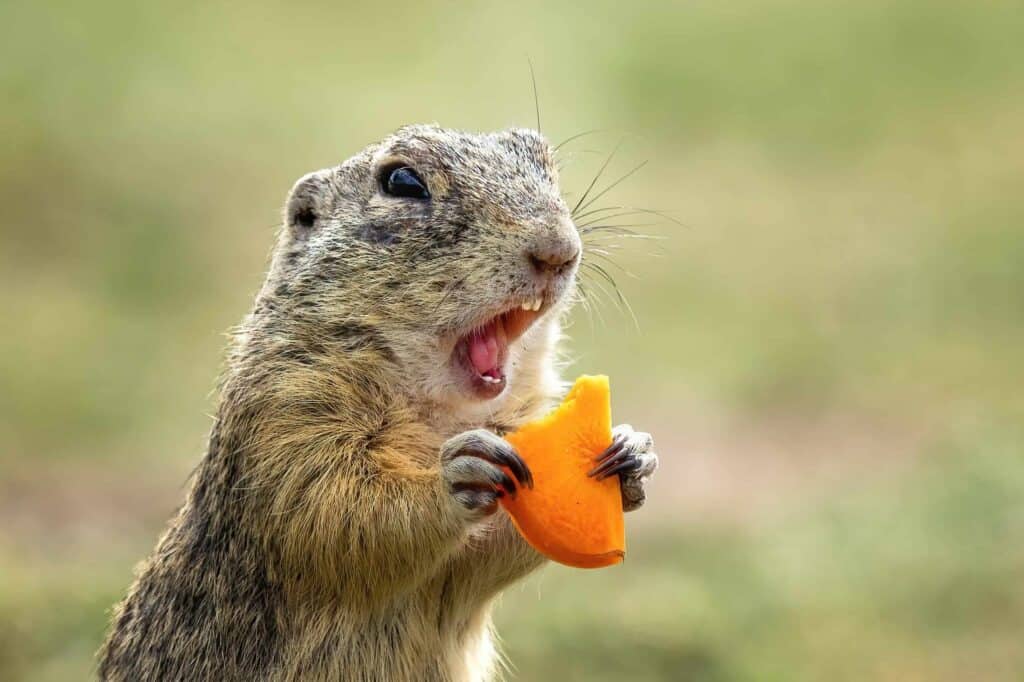
Groundhogs live underground in complicated burrows that can be up to 25 feet long.
©eumates/Shutterstock.com
Groundhogs are also known as woodchucks, and they belong to the family Sciuridae, which includes squirrels, chipmunks, and prairie dogs. They are medium-sized rodents that can grow up to two feet long and weigh between six to twelve pounds. Their fur is brownish-gray with a white underbelly.
Groundhogs have strong legs and sharp claws for digging burrows in the ground, where they spend most of their time sleeping or hibernating during winter months. They are herbivores that primarily eat plants such as grasses, clovers, dandelions, and other vegetation found in meadows or open fields.
These animals have become popularized due to the annual Groundhog Day celebration on February 2nd of each year. On this day, people gather around Punxsutawney Phil’s burrow in Pennsylvania, waiting for him to emerge from his hole. According to tradition, if he sees his shadow, it means there will be six more weeks of winter; if not, spring will arrive early.
Overall, groundhogs play an important role in their ecosystem by aerating soil through their extensive tunneling systems while providing food sources for both predators like coyotes or foxes as well as prey species like rabbits or deer.
When Do Groundhogs Have Babies?

The female groundhog gives birth to two to six pups on average.
©iStock.com/Natalia SERDYUK
Groundhogs are able to breed when they are two years old. Their breeding season is March and April. Groundhogs are pregnant for 31 or 32 days and have babies during April and May. The mother and father stay together in the den during the pregnancy. After the babies are born, the male leaves, and the mother takes care of the young. They have babies only once per year and have between one and nine babies in a litter. They give birth inside their underground den.
Behavior
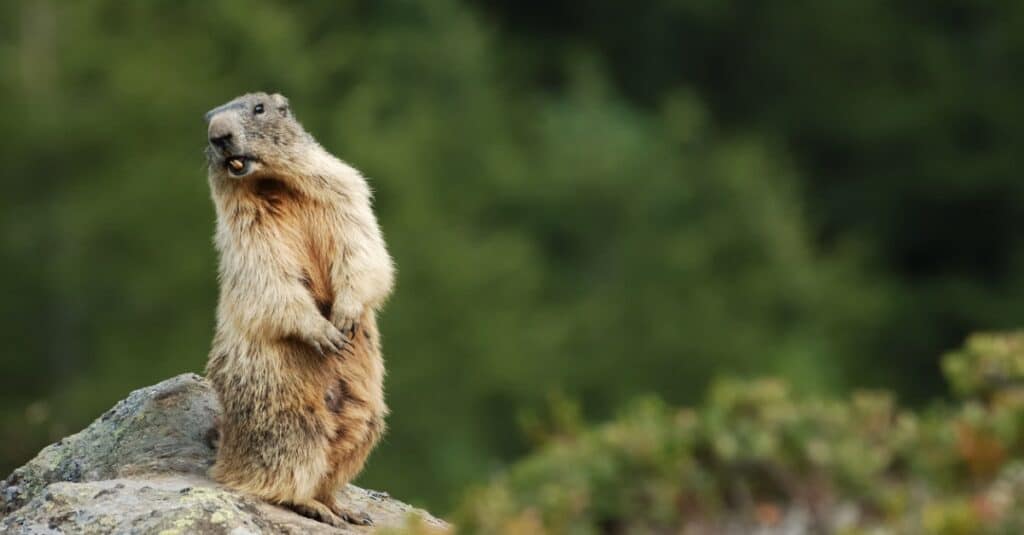
Groundhogs have a squirrel-like face and stand about two feet tall.
©iStock.com/gilles_oster
Groundhogs, also known as woodchucks, are fascinating creatures with unique behaviors that have fascinated scientists and nature enthusiasts alike. These animals are most commonly found in North America, where they reside in burrows underground and spend the majority of their time foraging for food.
Groundhogs are incredibly versatile creatures that possess an impressive range of physical abilities. Despite their reputation as burrowing animals, they are surprisingly adept swimmers and can even climb trees when necessary to evade predators or survey their surroundings. When groundhogs feel threatened, they will typically retreat to the safety of their burrows, where they will fiercely defend themselves with their powerful front teeth and front claws.
These creatures are also known for being highly territorial and aggressive towards other groundhogs. They may engage in battles with one another in order to establish dominance within a given area or colony. When not actively engaged in eating or fighting, groundhogs can often be observed standing upright on their hind feet while scanning the environment for potential threats. This behavior is indicative of the animal’s cautious nature and serves as a testament to its keen survival instincts.
In times of danger, groundhogs have been known to emit high-pitched whistles that serve as alarms for others within their colony – hence earning them the nickname “whistle-pigs.” Additionally, these animals may make various types of vocalizations, such as low barks or teeth-grinding sounds, depending on the situation at hand.
Overall, it is clear that these fascinating creatures possess an array of unique behavioral traits that contribute greatly to their success as a species. From swimming and climbing trees to fiercely defending themselves against predators and establishing dominance over other individuals within their colonies, groundhogs truly embody resilience in all aspects of life.
Diet
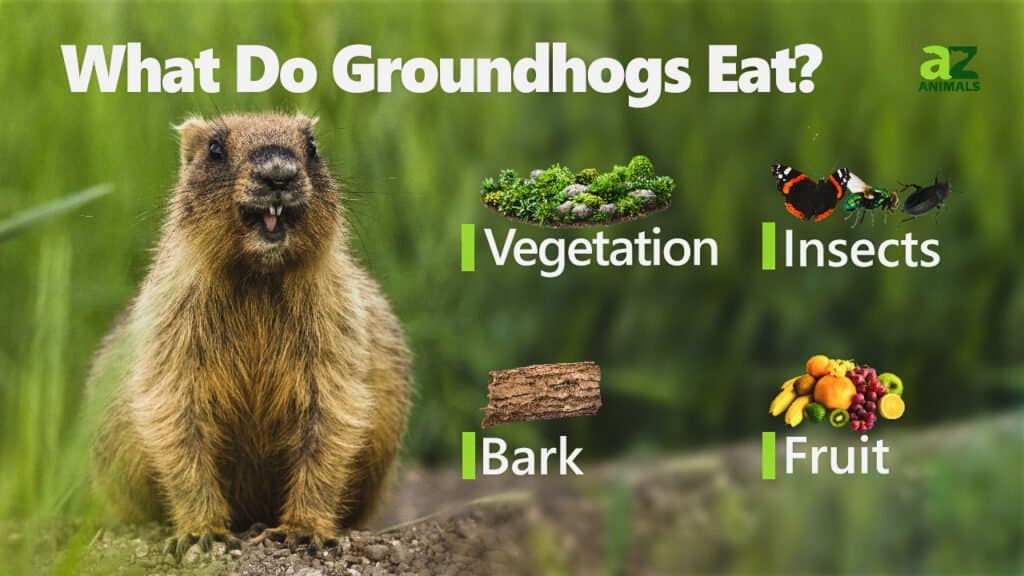
Groundhogs are herbivorous animals that have a varied diet depending on the season. During the spring and summer months, groundhogs consume mainly green plants such as grasses, clovers, dandelions, and wildflowers. In addition to greens and flowers, they also eat vegetables like carrots and sweet potatoes. As autumn arrives and winter approaches, groundhogs switch their diet to more calorie-dense foods. These include nuts, seeds, and grains, which help them fatten up for hibernation. They may even raid bird feeders in search of food during this time.
On average, an adult groundhog will eat around one-quarter of its body weight each day in vegetation. This is approximately 1-3 pounds per day. However, it’s important to note that their appetite can vary greatly depending on factors such as temperature changes or availability of food sources.
Some key foods for a groundhog’s survival include coltsfoot and dandelion in the spring. They are also fond of sheep sorrel, buttercups, raspberries, buckwheat, and many types of wild lettuce. Groundhogs have been observed eating mulberries, plantains, clover, and agricultural crops. When unable to find plant material to eat, they resort to snacking on grubs, snails, and grasshoppers.
Overall a well-rounded diet full of fresh produce, along with occasional treats from nature, helps ensure these furry mammals thrive year-round!
Habitat
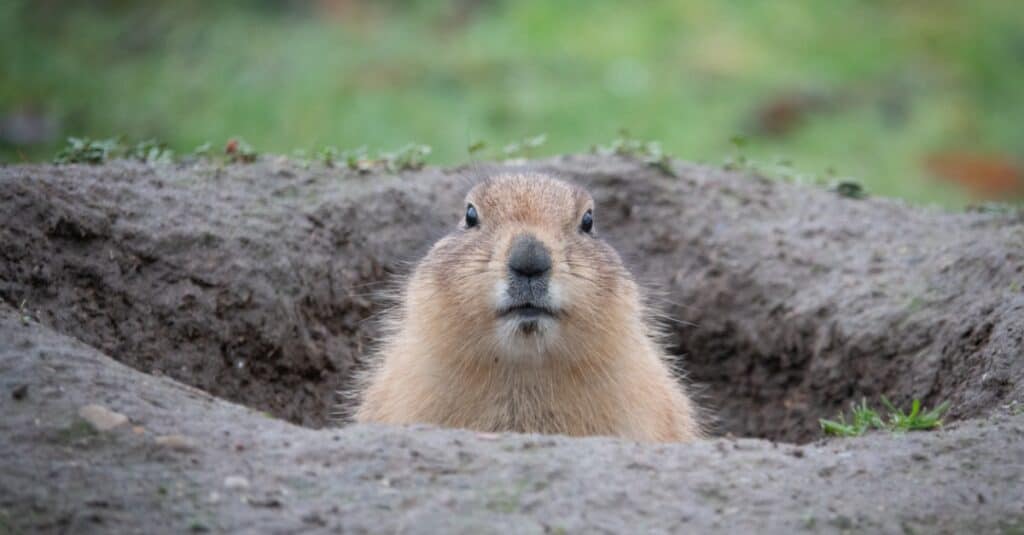
Groundhog burrows have multiple chambers and multiple entrances.
©iStock.com/undefined undefined
Groundhogs are well-known for their unique burrows that serve multiple purposes. These underground structures are used by groundhogs for sleeping, raising young, hibernating, mating, and retreating from bad weather. In fact, groundhog burrows are so versatile that they can even be used as baby groundhog nurseries.
One interesting feature of a groundhog burrow is a special side chamber designed specifically for use as a potty place. This not only helps keep the main living area clean but also reduces the risk of predators detecting them through scent trails. The sleeping area in a groundhog’s den is typically lined with soft grasses and leaves to provide insulation and comfort during cold winter months. To create their elaborate homes, these industrious creatures remove approximately six cubic feet of earth for each den. Researchers have discovered some dens that were nearly 25 feet long!
Despite being mostly solitary animals, it’s not uncommon to find multiple groundhogs coexisting within the same burrow without disturbing one another due to their large size. Groundhog dens generally have several entrances – sometimes up to five – providing easy access in case of emergency or predator encounters.
In conclusion, there’s no doubt that groundhogs possess an impressive engineering talent when it comes to creating intricate underground habitats capable of serving many different functions simultaneously!
Hibernation
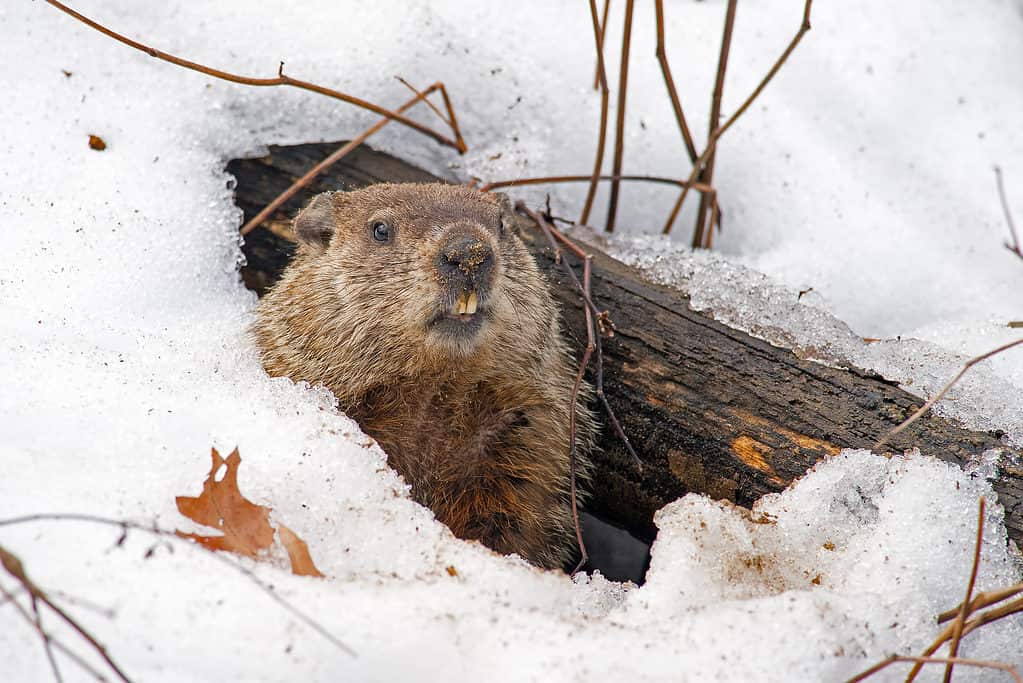
Many animals enter true hibernation during winter to survive the cold. The groundhog is one of them.
©Brian E Kushner/Shutterstock.com
Groundhog hibernation is a fascinating phenomenon that has been studied extensively by biologists and naturalists. During the winter months, groundhogs enter a state of torpor in which their metabolism slows down significantly, and they become inactive. This allows them to conserve energy during periods of low food availability.
The timing of groundhog hibernation varies depending on factors such as geographic location, temperature, and food availability. In general, groundhogs begin to prepare for hibernation in late summer or early fall by eating large amounts of food to build up fat reserves.
Once temperatures start to drop in the fall, groundhogs will retreat into their burrows, where they will spend most of the winter months. During this time, their body temperature drops from around 99°F (37°C) to as low as 38°F (3°C). Their heart rate also slows down from around 80 beats per minute to just a few beats per minute. They take an average of one breath every 5 or 6 minutes! Despite being in a deep sleep-like state during hibernation, groundhogs are still able to regulate their body functions and periodically wake up briefly throughout the winter months. This allows them to urinate and defecate without leaving their den. They cycle through deep hibernation, torpor, and slightly awake as the need arises.
As the winter months come to an end, many people wonder when groundhogs will emerge from their hibernation. While the exact timing can vary depending on factors such as temperature and weather patterns, it is generally expected that they will begin to stir in early February.
It’s important to note that males and females may not emerge at exactly the same time. In some cases, males may wake up a few days before females do. This could be due to differences in body size or other physiological factors.
One question that often comes up when discussing groundhog hibernation is whether they still have enough body weight left to help them survive after coming out of hibernation. The answer is yes – even though groundhogs lose a significant amount of weight during their long sleep, they typically retain enough reserves to make it through until food becomes more plentiful again in the springtime.
Overall, understanding how groundhogs go into and come out of hibernation can help us appreciate these fascinating creatures even more. By learning about their behavior and biology, we can gain a deeper appreciation for the role they play in our ecosystem and better understand how we can protect them for generations to come.
The photo featured at the top of this post is © iStock.com/Jean Landry
Thank you for reading! Have some feedback for us? Contact the AZ Animals editorial team.






